Mount Sinai Hospital builds case for improving Maternity Services for uninsured women
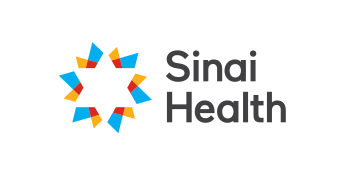
- Industry
- Healthcare
- Location
- Ontario, Canada
- Goals
- Build a case to support the initiative for starting a prenatal clinic for uninsured women
Achievements with Simul8
-
-
Modelled maternity services looking at several scenarios surrounding insured versus uninsured women
-
-
A whole system simulation tool was designed to support strategic planning in health and social care
-
-
Built a case for decision makers to implement prenatal services for women without access to health insurance
-
-
Gained support from partners and private donor in providing funds and resources to start-up a pre-natal clinic for uninsured, pregnant women
Measuring impact of service changes on patient care, bed capacity and cost
Internationally acclaimed for excellence in clinical care, Mount Sinai Hospital is an academic teaching facility providing acute care for adults and children in the Ontario province.
With a diverse population, Mount Sinai treats a high number of patients experiencing complications related to delivery.
To improve patient care, in particular amongst vulnerable communities, Simul8 healthcare simulation software was used to simulate the maternity unit with a view to developing prenatal services for uninsured women who have restricted access to services, compared to those who are insured.
Using Simul8, Mount Sinai Hospital was able to model maternity services looking at a number of scenarios surrounding insured vs. uninsured women and the impact of service changes on patient care, bed capacity and cost to improve population health and pathways.
What challenges did Mount Sinai Hospital face?
Based in The Toronto Central Local Health Integration Network (LHIN), with a population of 1.17m, Mount Sinai Hospital treats patients in Canada’s most urban area with a diverse demographic. Many communities residing in the city have limited healthcare coverage, which significantly restricts their access to services.
Consequently, many women are not receiving the appropriate level of prenatal care, so essential for the health and well-being of mother and infant. For this group of uninsured women, it is not uncommon for them to first enter the healthcare system via the emergency room towards the end of their term, when health implications tend to be more critical.
This not only heightens risk to the mother and child, but also increases the cost of services as this group has a higher rate of C-sections which impacts upon Length of Stay (LOS) in Hospital. In addition there is the increased likelihood of clinical complications in newborns.
Mount Sinai wanted to develop an early intervention strategy that would monitor the pregnancies of this vulnerable community and recognise any problems at an early stage, rather than waiting until the latter stage of pregnancy when problems would be more advanced.
The intention was to start a prenatal clinic for uninsured women and the challenge was to come up with the evidence to support the initiative.


“Simul8 was the only tool available to build a case for developing prenatal services for this vulnerable population. Without it we wouldn’t have come as far along in the process in terms of having evidence for decision makers.”
Director, Community Development & Integration, Mount Sinai Hospital

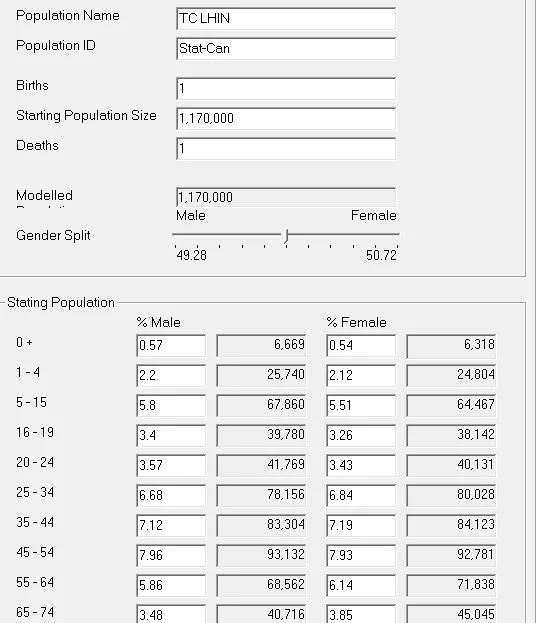
Using Simul8 to find a solution
Mount Sinai worked with Simul8 to develop a series of simulations – a whole system simulation tool designed to support strategic planning in health and social care.
Using the healthcare simulation software, Mount Sinai Hospital ran a number of scenarios looking at insured vs. uninsured patients to see the impact on bed utilization and costs. By simulating this, they were able to determine the number of beds they would need to plan for in order to ensure availability when patients needed them.
Using population data from the Toronto Central Local Health Integration Network (LHIN), Mount Sinai Hospital used female age-banded population and fertility rates to calculate expected conceptions.
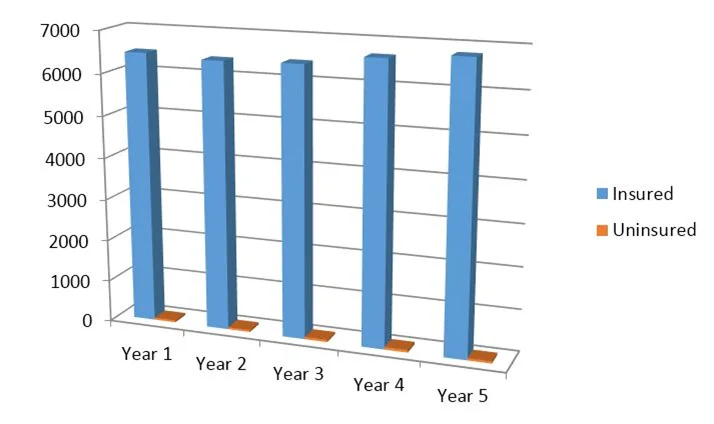
From the birth rate, Mount Sinai Hospital could then calculate the percentage of births expected to attend the hospital within the insured group (41.85%), and those births from the uninsured group (0.35%).
This data was then entered into the simulation modeling the pathway of women through the maternity unit. Population projections showed the likely increase of births over the next 5 years – from 6500 to 6855.
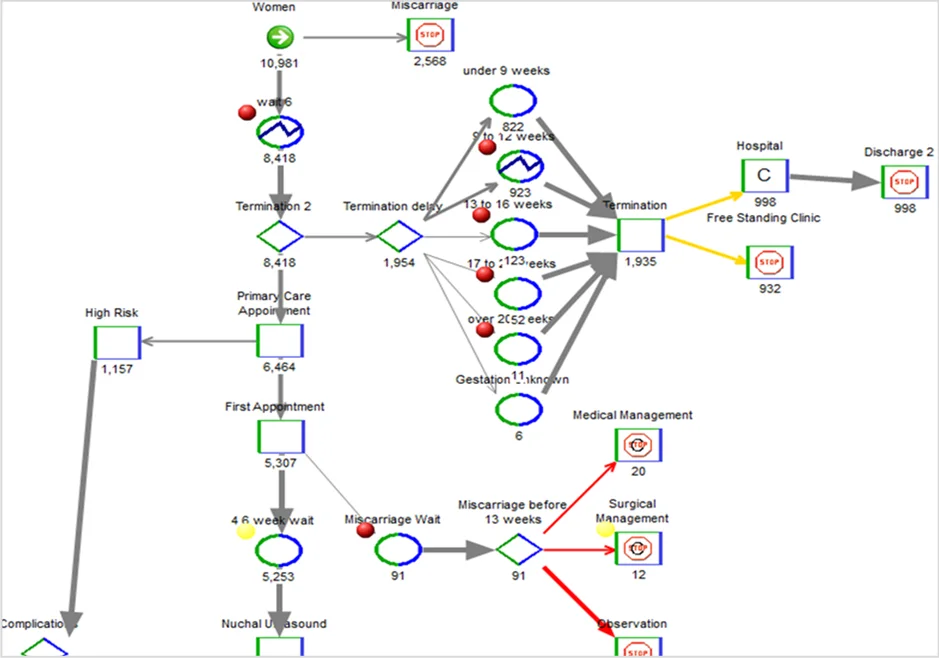
What were the results?
The simulation analyzes the way in which women access maternity services from conception through to delivery. Alternative pathways were developed for insured and uninsured women.
Prenatal Bed Utilization
Using the simulation, Mount Sinai Hospital was able to look at bed capacity based on the complex nature of the uninsured group, combined with an increasing aging population. They wanted to determine the number of beds they would need to plan for to ensure beds were available, should a patient need it.
Testing the scenario with bed numbers allowed Mount Sinai Hospital to understand how many beds would be required to ensure no waiting times and their utilization. 100 beds showed an 87% utilization rate with some waits starting to build.
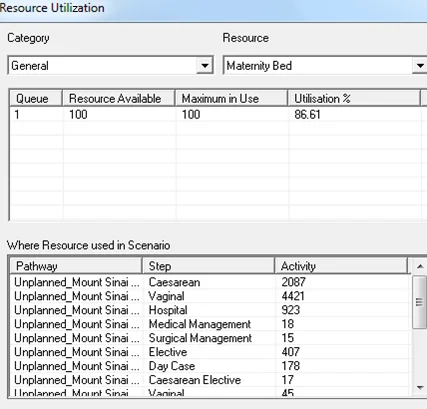
A further scenario modeled what would happen if there were 5% fewer elective C-sections – a target Mount Sinai hoped to achieve.
The average LOS following a C-section operation is between 2 and 15 days, compared to between 1 and 5 days for a natural delivery. By providing care at an earlier stage through prenatal care, it was anticipated that the number of C-sections would be reduced.
The simulation showed that there would be a 2% reduction in bed utilization by reducing elective C-sections by 5%, which equated to a $37k reduction in costs per year.


“The simulation gave concrete evidence to senior leadership to think critically about the need for the service.”
Director, Community Development & Integration, Mount Sinai Hospital

Achievements with Simul8
Using Simul8, Mount Sinai Hospital was able to build a case for hospital decision makers to implement prenatal services for women without access to health insurance.
Using accurate data from Toronto Central LHIN, the simulation provided evidence-based results that helped shape decision making by senior staff on the need for the service. By running various scenarios to understand what the implications of changes would be, Mount Sinai could test the benefits of introducing the service on patients’ wellbeing, along with longer-term cost reductions.
Following completion of the project, Mount Sinai Hospital has attracted partners who are interested in working with them to implement the new service. In addition, the hospital has been able to attract a private donor interested to support Mount Sinai by providing funds and resources to start up a pre-natal clinic for uninsured, pregnant women.
Learn more about Simul8 for healthcare process improvement
Find out more about how simulation is used by healthcare organizations, read more case studies and access a range of learning resources.
Learn more